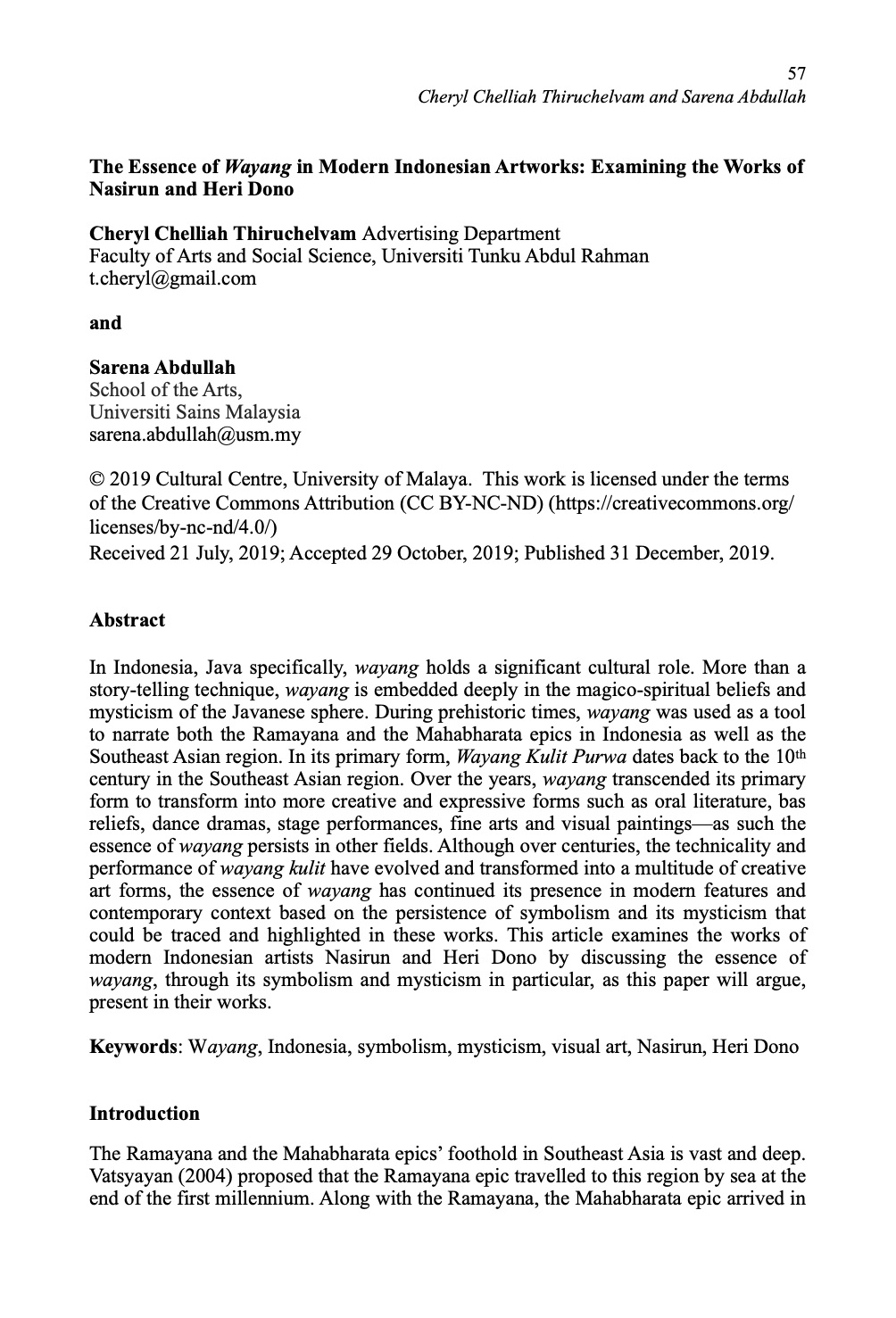The Essence of Wayang in Modern Indonesian Artworks: Examining the Works of Nasirun and Heri Dono
Keywords:
Wayang, Indonesia, symbolism, mysticism, visual art, Nasirun, Heri DonoAbstract
In Indonesia, Java specifically, wayang holds a significant cultural role. More than a story-telling technique, wayang is embedded deeply in the magico-spiritual beliefs and mysticism of the Javanese sphere. During prehistoric times, wayang was used as a tool to narrate both the Ramayana and the Mahabharata epics in Indonesia as well as the Southeast Asian region. In its primary form, Wayang Kulit Purwa dates back to the 10th century in the Southeast Asian region. Over the years, wayang transcended its primary form to transform into more creative and expressive forms such as oral literature, bas reliefs, dance dramas, stage performances, fine arts and visual paintings—as such the essence of wayang persists in other fields. Although over centuries, the technicality and performance of wayang kulit have evolved and transformed into a multitude of creative art forms, the essence of wayang has continued its presence in modern features and contemporary context based on the persistence of symbolism and its mysticism that could be traced and highlighted in these works. This article examines the works of modern Indonesian artists Nasirun and Heri Dono by discussing the essence of wayang, through its symbolism and mysticism in particular, as this paper will argue, present in their works.
Downloads

Downloads
Published
Issue
Section
License

